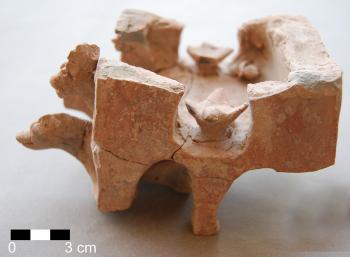American Journal of Archaeology | The Journal of the Archaeological Institute of America
You are here
Ritual and Identity in Rural Mesopotamia: Hirbemerdon Tepe and the Upper Tigris River Valley in the Middle Bronze Age
October 2015 (119.4)
Ritual and Identity in Rural Mesopotamia: Hirbemerdon Tepe and the Upper Tigris River Valley in the Middle Bronze Age
Excavations at the relatively small but strategically placed site of Hirbemerdon Tepe, located along the west bank of the upper Tigris River in modern southeastern Turkey, have yielded significant results. During the Middle Bronze Age (2000–1600 B.C.E.), the site was situated in an ecologically stratified landscape that included river terraces suitable for agriculture as well as forested uplands ideal for pastoral and hunting activities. A significant result of these excavations, which were conducted by the Hirbemerdon Tepe Archaeological Project, was the discovery of a well-preserved architectural complex with associated ritual artifacts on the northern side of the high mound. This report describes and situates this Middle Bronze Age site within its geographic, cultural, and ecological context. It examines the emergence of this small regional center and investigates the role of ritual activities in the development of socially integrated communities in the frontier zone of northern Mesopotamia during the beginning of the second millennium B.C.E.
By Nicola Laneri, Mark Schwartz, Jason Ur, Anacleto D’Agostino, Remi Berthon, Mette Marie Hald, and Anke Marsh
American Journal of Archaeology Vol. 119, No. 4 (October 2015), pp. 533–564
DOI: 10.3764/aja.119.4.0533
© 2015 Archaeological Institute of America


